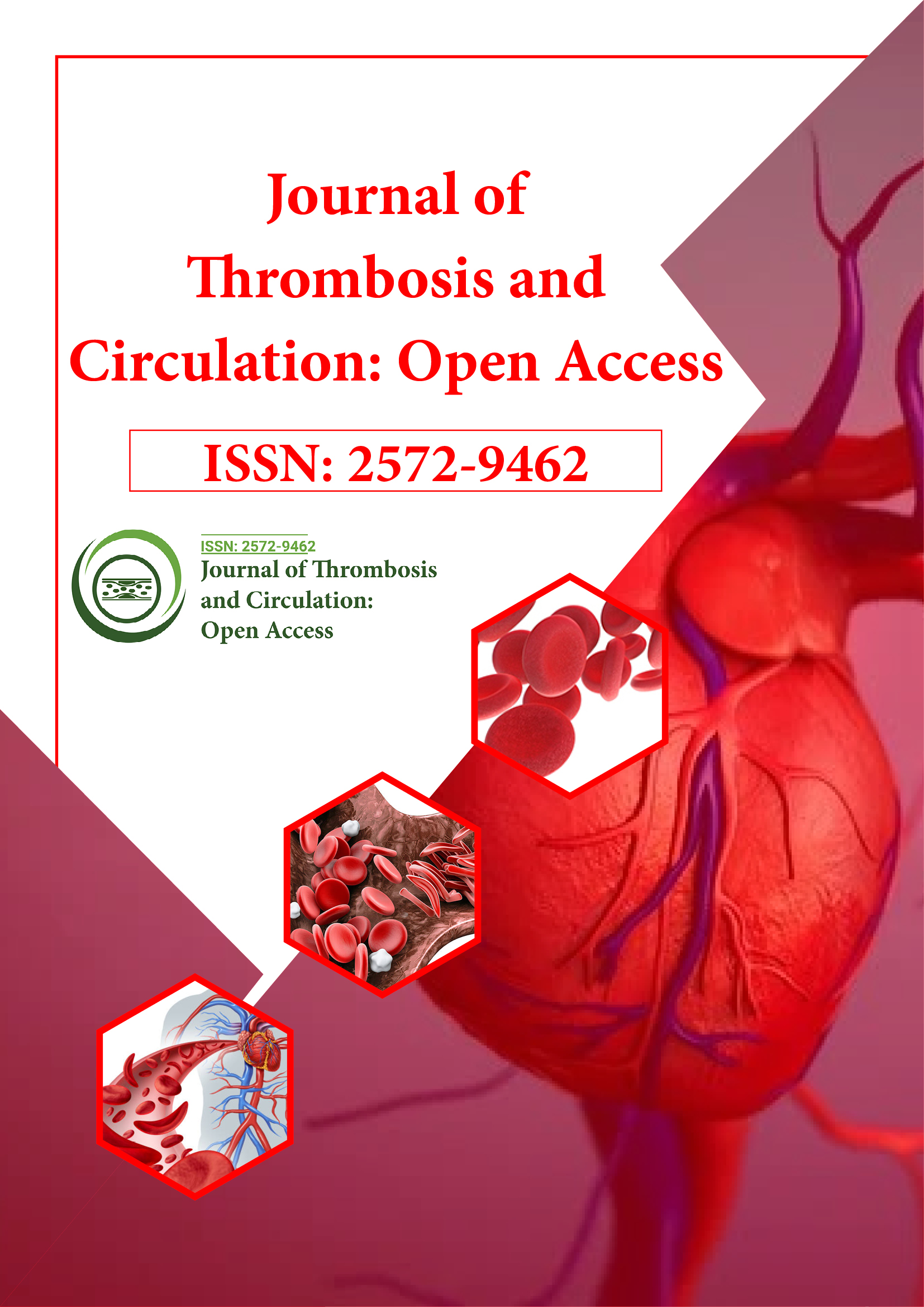Indexed In
- RefSeek
- Hamdard University
- EBSCO A-Z
- Publons
- Google Scholar
Useful Links
Share This Page
Journal Flyer

Open Access Journals
- Agri and Aquaculture
- Biochemistry
- Bioinformatics & Systems Biology
- Business & Management
- Chemistry
- Clinical Sciences
- Engineering
- Food & Nutrition
- General Science
- Genetics & Molecular Biology
- Immunology & Microbiology
- Medical Sciences
- Neuroscience & Psychology
- Nursing & Health Care
- Pharmaceutical Sciences
Commentary - (2025) Volume 11, Issue 1
Therapeutic Considerations for Elucidating the Pathophysiology of Venous Stasis
Maarten Limper*Received: 21-Mar-2024, Manuscript No. JTCOA-24-25200; Editor assigned: 23-Mar-2024, Pre QC No. JTCOA-24-25200 (PQ); Reviewed: 07-Apr-2024, QC No. JTCOA-24-25200; Revised: 24-Feb-2025, Manuscript No. JTCOA-24-25200 (R); Published: 03-Mar-2025, DOI: 10.4172/2572-9462.25.11.293
Description
Venous stasis refers to impaired blood flow within the venous system, often resulting from reduced venous return or obstruction of venous outflow. This condition can lead to a range of clinical manifestations, including edema, skin changes, and venous ulcers. Understanding the mechanisms underlying venous stasis is crucial for effectively managing and preventing its complications.
Mechanisms of venous stasis: Venous stasis typically arises from dysfunction within the venous system, leading to impaired blood flow and pooling of blood in the lower extremities. Several factors contribute to venous stasis, including:
Venous valve dysfunction: Healthy veins contain one-way valves that facilitate unidirectional blood flow towards the heart and prevent retrograde flow. Dysfunction or incompetence of these valves can lead to venous reflux, where blood flows backward and accumulates in the lower extremities.
Reduced muscle pump function: The calf muscle pump plays a crucial role in venous return by contracting during walking or physical activity, thereby squeezing blood upward towards the heart. Reduced muscle pump function, often seen in sedentary individuals or those with immobilization, can contribute to venous stasis.
Venous obstruction: Obstruction of venous outflow, such as by blood clots (deep vein thrombosis) or compression from external sources (tumors, pregnancy), can impede blood flow and result in venous stasis.
Consequences of venous stasis: Venous stasis can lead to various clinical manifestations and complications, including:
Edema: Pooling of blood in the lower extremities due to venous stasis can result in swelling or edema, particularly in the ankles and legs. Persistent edema may contribute to discomfort and impaired mobility.
Skin changes: Chronic venous stasis can cause alterations in the skin, including hyperpigmentation, erythema, and thickening. These changes often result from inflammation, hemosiderin deposition, and impaired tissue oxygenation.
Venous ulcers: Prolonged venous stasis can lead to the development of venous ulcers, particularly in areas of skin subjected to chronic pressure or trauma. Venous ulcers are characterized by shallow, often painful wounds that are slow to heal and prone to infection.
Management strategies for venous stasis: The management of venous stasis focuses on improving venous return, reducing edema, and preventing complications. Key management strategies include:
Compression therapy: Compression stockings or bandages are commonly used to apply external pressure to the lower extremities, promoting venous return and reducing edema. Graduated compression garments exert higher pressure at the ankle, gradually decreasing towards the thigh, to counteract venous pooling.
Elevation: Elevating the legs above heart level when sitting or lying down can help facilitate venous return and reduce edema by utilizing gravity to assist blood flow towards the heart.
Physical activity: Regular physical activity, including walking, cycling, or swimming, can enhance muscle pump function and promote venous return. Exercise also helps maintain overall cardiovascular health and reduces the risk of venous stasisrelated complications.
Pharmacological interventions: In some cases, pharmacological interventions such as veno-active medications or anticoagulants may be prescribed to improve venous tone, reduce inflammation, or prevent thrombus formation.
Conclusion
Venous stasis is a common vascular condition characterized by impaired blood flow within the venous system, often leading to edema, skin changes, and venous ulcers. Understanding the mechanisms underlying venous stasis and implementing appropriate management strategies are essential for mitigating its impact on patient health and improving outcomes. By addressing venous stasis promptly and effectively, healthcare providers can alleviate symptoms, prevent complications, and enhance the quality of life for individuals affected by this condition.
Citation: Limper M (2025) Therapeutic Considerations for Elucidating the Pathophysiology of Venous Stasis. J Thrombo Cir. 11:293.
Copyright: © 2025 Limper M. This is an open-access article distributed under the terms of the Creative Commons Attribution License, which permits unrestricted use, distribution and reproduction in any medium, provided the original author and source are credited.
